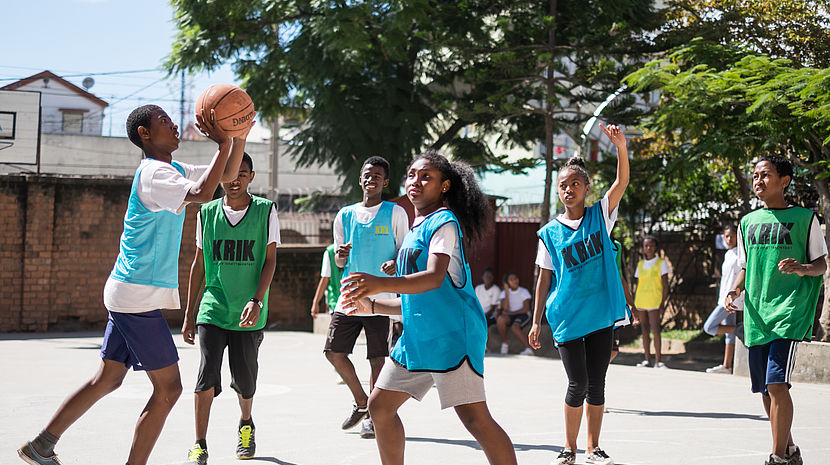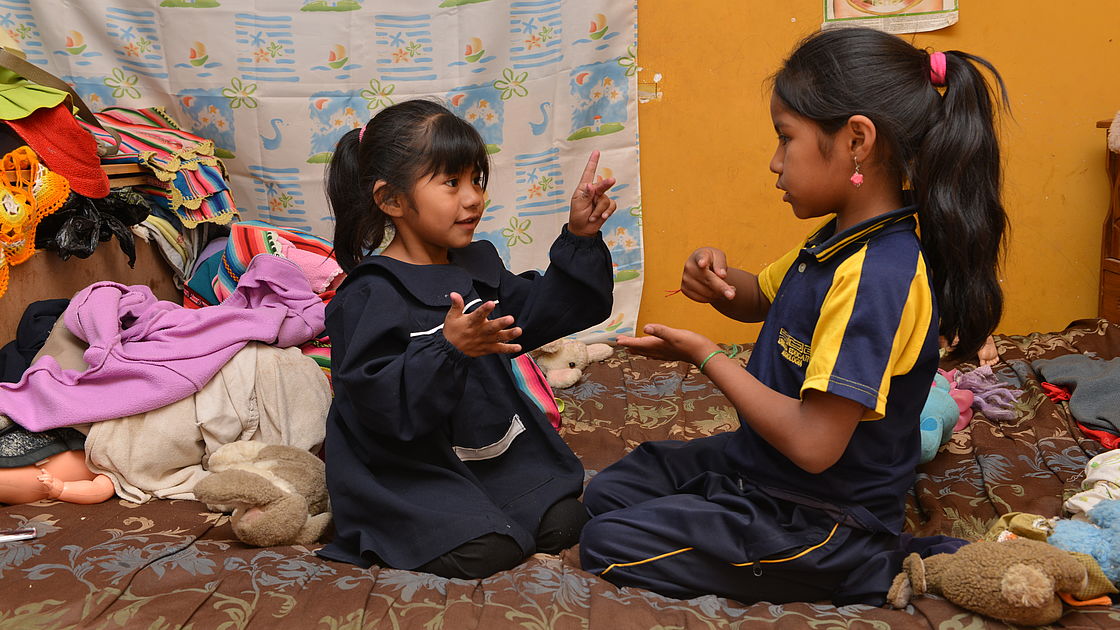Celebrating World Hearing Day 2020

Students at the Akama Deaf School in Madagascar play basketball during their break.
© CBM/Tangorra
The World Hearing Day is celebrated annually on 3 March. The aim of this day is to raise global awareness among the general public and policy makers about hearing loss and ear and hearing care (EHC).
Theme for World Hearing Day 2020
The theme for WHD this year is “Don’t let hearing loss limit you. Hearing for life” or just simply: “Hearing for life”.
World Hearing Day is the ideal opportunity to spread the word and raise the profile of ear and hearing care in people’s mind, in the world’s media and on the global health agenda. In CBM we approach this year’s WHD theme under a dual message:
- Our purpose to promote a more inclusive society for persons living with hearing disability: “Don’t let hearing loss limit you”.
- The need to raise awareness about prevention of hearing loss, in order to promote hearing conservation for the whole of a person’s life: “Hearing for life”.
Both these purposes are justified by WHO latest estimates: 466 million people live with disabling hearing loss. An overwhelming majority of them reside in low- and middle-income countries and commonly lack access to required services and interventions. It is expected that the prevalence of hearing loss will rise considerably in coming decades due to changing population demographics, increasing exposure to risk factors such as recreational noise, as well as persistence of untreated ear conditions such as otitis media.
Hearing loss can be prevented!
Many of the causes that lead to hearing loss are preventable. Particularly in children, in whom 60% of hearing loss can be prevented through public health strategies. Some interventions can be as straight forward as a timely treatment prescribed for an Acute Otitis Media. This is a painful infection of the middle ear, majorly in children, which if treated early with a simple antibiotic, can avoid serious complications, like the perforation of the eardrum, developing into a chronic otitis media or even death. Death may occur if the infection extends outside the middle ear into the brain cavity, causing meningitis or a brain abscess. Each year, 21,000 people die due to complications of otitis media, the majority of them are children under 4 years of age living in low- and middle- income countries.
Hearing care and hearing loss were highlighted as a public health issue with the adoption of the resolution (WHA70.13) on prevention of deafness and hearing loss during the World Health Assembly in 2017. This resolution calls upon WHO and its Member States to undertake advocacy through World Hearing Day on 3rd March and, taking into consideration their own circumstances, to address key topics through national programmes and strategic plans.
CBM key interventions in hearing care
CBM and partners can, and already do, contribute to strengthening EHC by:
- supporting partners alongside their national governments towards integrating strategies for EHC within the framework of their primary health care systems;
- collecting high-quality population-based data on ear diseases and hearing loss in order to develop evidence-based strategies and policies;
- establishing suitable training programmes for the development of human resources in the field of EHC;
- contributing towards ensuring the highest possible vaccination coverage against rubella, measles, mumps and meningitis, in accordance with national priorities;
- collaborating to develop, implement and monitor screening programmes for early identification of ear diseases, and hearing loss in high-risk populations
- improving access to affordable, cost-effective, high-quality, assistive hearing technologies and products, including hearing aids and other assistive devices;
- advocating to develop and implement regulations for the control of noise in occupational settings, at entertainment venues and through personal audio systems, as well as for the control of medicines which may damage hearing
- improving access to a variety of ways of communicating through promoting alternative methods of communication, such as sign language and captioning;
- working towards the attainment of Sustainable Development Goal 3 (Ensure healthy lives and promote well-being for all at all ages) and Goal 4 (Ensure inclusive and equitable quality education and promote lifelong learning opportunities for all) in the 2030 Agenda for Sustainable Development, with special reference to people with hearing loss.
WHD 2020 brings a great opportunity for CBM and partners to contribute towards raising awareness about hearing disability and to advocate for multi-sectoral collaboration in order to strengthen EHC within local health services and systems. Together we can make EHC more accessible for all and achieve a more inclusive society. Please contribute to observe WHD in your project and community this year and share your activities with as many people as possible.
What’s coming up next?

6 year old Jhesabel (left) was affected by hearing impairment at birth. She lives in Bolivia and visits a school for deaf children. She is learning sign language at Altiora, a pre-school for partially and complete hearing impaired children. Here, she is communicating with her 8 year old sister Marializ, who is also hearing impaired.
© CBM/Foto Backofen Mhm
The next upcoming milestone for EHC is the launch of the World Report on Hearing in May, 2020. It will be available online for free download here.
Until then you can see find relevant information about EHC following that same link.